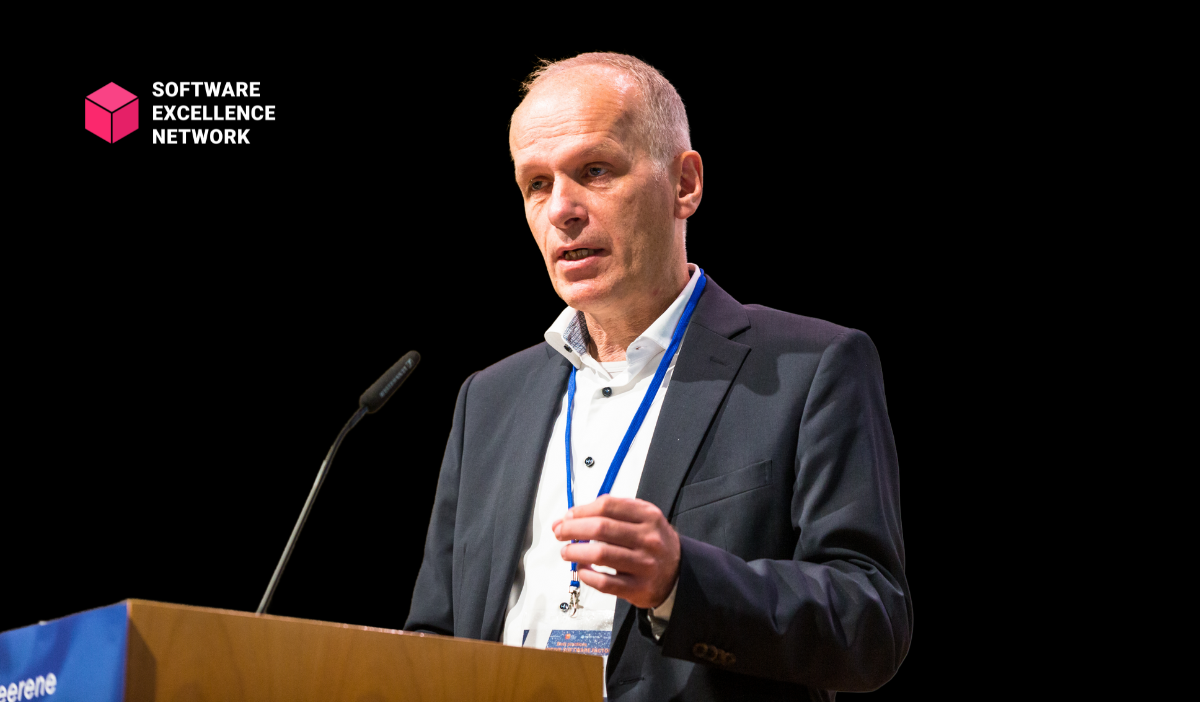
Software is rapidly becoming the defining factor in the automotive industry. While hardware has traditionally been the main driver of value, software is now the key differentiator that fuels innovation and competitiveness. In his presentation, Martin Schleicher, Head of Software Strategy at Continental, emphasized that companies must fundamentally shift their perception of software—from a cost center to a strategic asset essential for value creation.

Many companies still see software as a necessary but costly addition rather than a critical component of their overall business value. Schleicher stressed that this mindset needs to change across all levels of an organization. In the automotive sector, where software now controls an increasing share of a vehicle’s functionality, failing to recognize its true value can be a costly mistake.
A major challenge for traditional automakers is their tendency to treat software as an extension of their existing business rather than establishing dedicated software organizations. You need separate organizations for the software business, Schleicher explained. Attempting to integrate software into traditional structures without adapting processes and mindsets often leads to inefficiencies and failure.
He pointed to examples from the tech industry, noting that while Apple excels at software, its business remains fundamentally hardware-driven. Tesla, on the other hand, treats software as a strategic asset, using real-time customer data and over-the-air updates to continuously refine its products.
Another key theme of Schleicher’s talk was the importance of open-source software. Historically, the automotive industry has relied on closed systems, but there is growing recognition that shared platforms and collaborative development can drive faster innovation.
Electrobit, a subsidiary of Continental, actively leverages open-source solutions and contributes to open-source projects. Schleicher sees this as a model for the entire industry: Open source can be a way for us, as an industry, to collaborate and push innovation forward together.
Rather than reinventing the wheel for every software challenge, automakers can learn from the IT industry, where standardized and compatible interfaces have led to more efficient development. This shift could reduce costs and improve software quality across the sector.
Speed is a critical factor in modern software development, yet Schleicher noted that in some companies, it can take up to three months for a new software release to reach a vehicle. In an era where digital products evolve at lightning speed, this delay is unsustainable.
Tesla and other software-first companies take a different approach, leveraging real-world vehicle data to continuously refine their software. Instead of waiting to release a "perfect" system, they prioritize incremental improvements. Schleicher put it bluntly: "Be the fastest with the second-best solution, not the slowest with the best one."
To enable faster innovation, automakers need to invest in cloud simulations and virtual electronic control units (ECUs). By creating digital testing environments, companies can validate software before it reaches physical vehicles, significantly reducing development cycles and increasing efficiency.
Schleicher also highlighted the challenge automakers face in structuring their software development efforts. Should software development be fully controlled in-house, or should it be a coordinated effort across the supply chain? While there is no definitive answer yet, what’s clear is that transparency, open interfaces, and collaboration will be key.
A radical shift is required: software must be seen as a strategic pillar of the company, not just another IT project. Automakers that embrace this transformation will gain a competitive edge, while those that cling to outdated structures risk falling behind.
Schleicher’s presentation made one thing clear—automotive software is at the center of a major industry shift. Software is no longer just a necessity; it is a value driver that enables competitive differentiation, faster innovation cycles, and entirely new business models.
However, achieving this transformation requires a fundamental rethink. Companies must move away from rigid corporate structures and embrace a more agile, software-driven approach. Open source, data-driven development, and virtual testing environments will be critical elements of this shift.
The future of the automotive industry will be shaped by those who adapt quickly and fully commit to the new realities of software-driven mobility.
The Software Excellence Network is an exclusive community for executives, experts, and decision-makers who drive software development at the highest level. It connects industry thought leaders to discuss proven methods, strategic approaches, and innovative technologies that ensure the success of large-scale software projects.
Whether in the automotive industry, finance, or other technology-driven sectors, the Software Excellence Network provides access to exclusive events, in-depth analyses, and best practices from leading companies. Engage with industry experts, gain new perspectives, and stay at the forefront of digital transformation.
Note: This article provides an overview of the key ideas presented by Martin Schleicher in his talk. While we have summarized the most important concepts and innovations he discussed, the full depth of his insights and examples can best be experienced by watching the complete session below. To dive deeper and hear directly from the speaker, we invite you to watch the full presentation. If you have any questions or would like more information, feel free to reach out to us.
These Stories on Events/Webinars
August-Bebel-Str. 26-53
14482 Potsdam, Germany
hello@seerene.com
+49 (0) 331 706 234 0
Generative AI Seerene GmbH
August-Bebel-Str. 26-53
14482 Potsdam, Germany
hello@seerene.com
+49 331 7062340